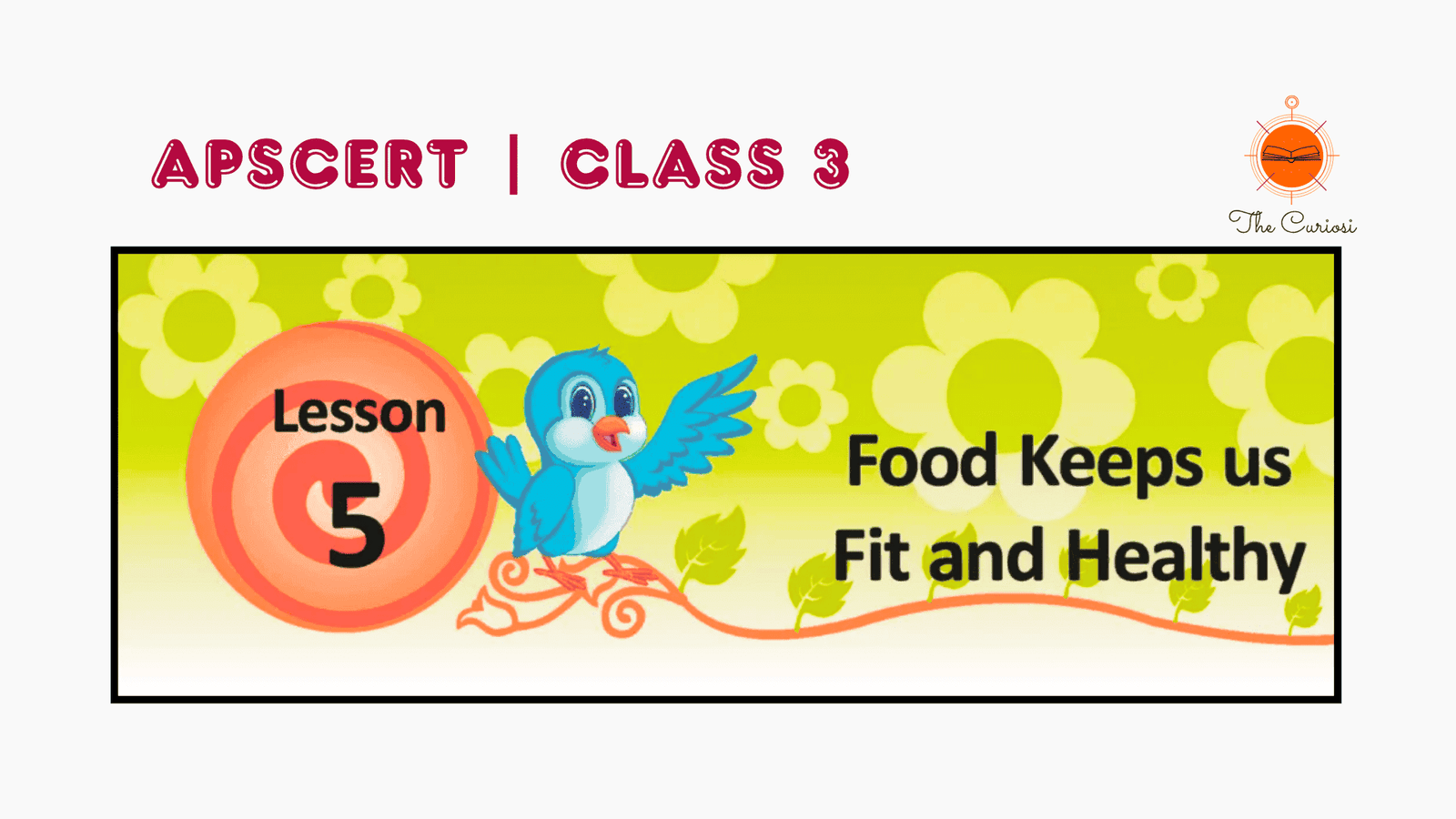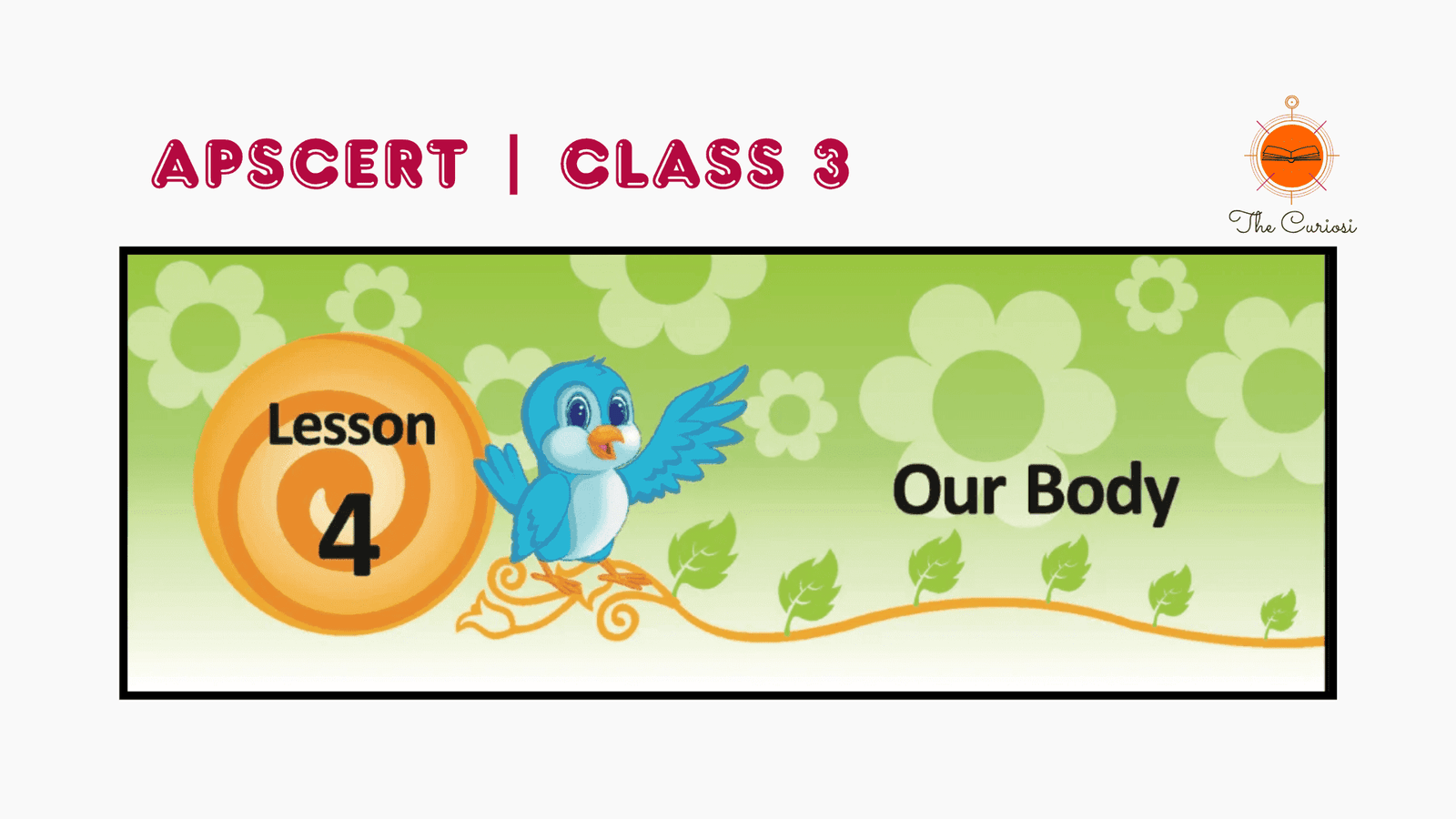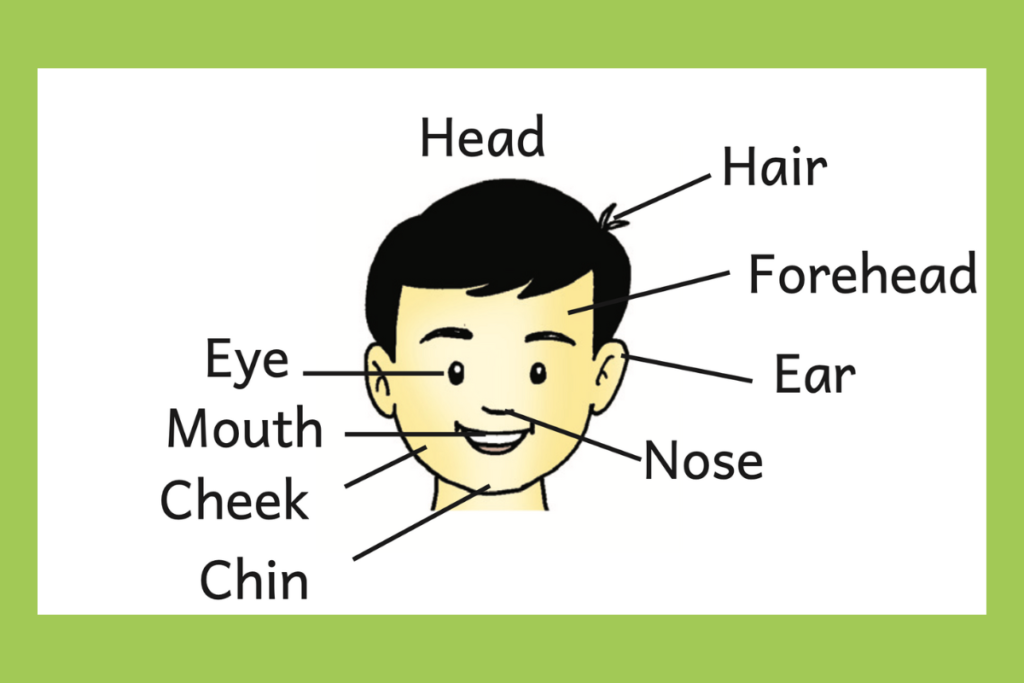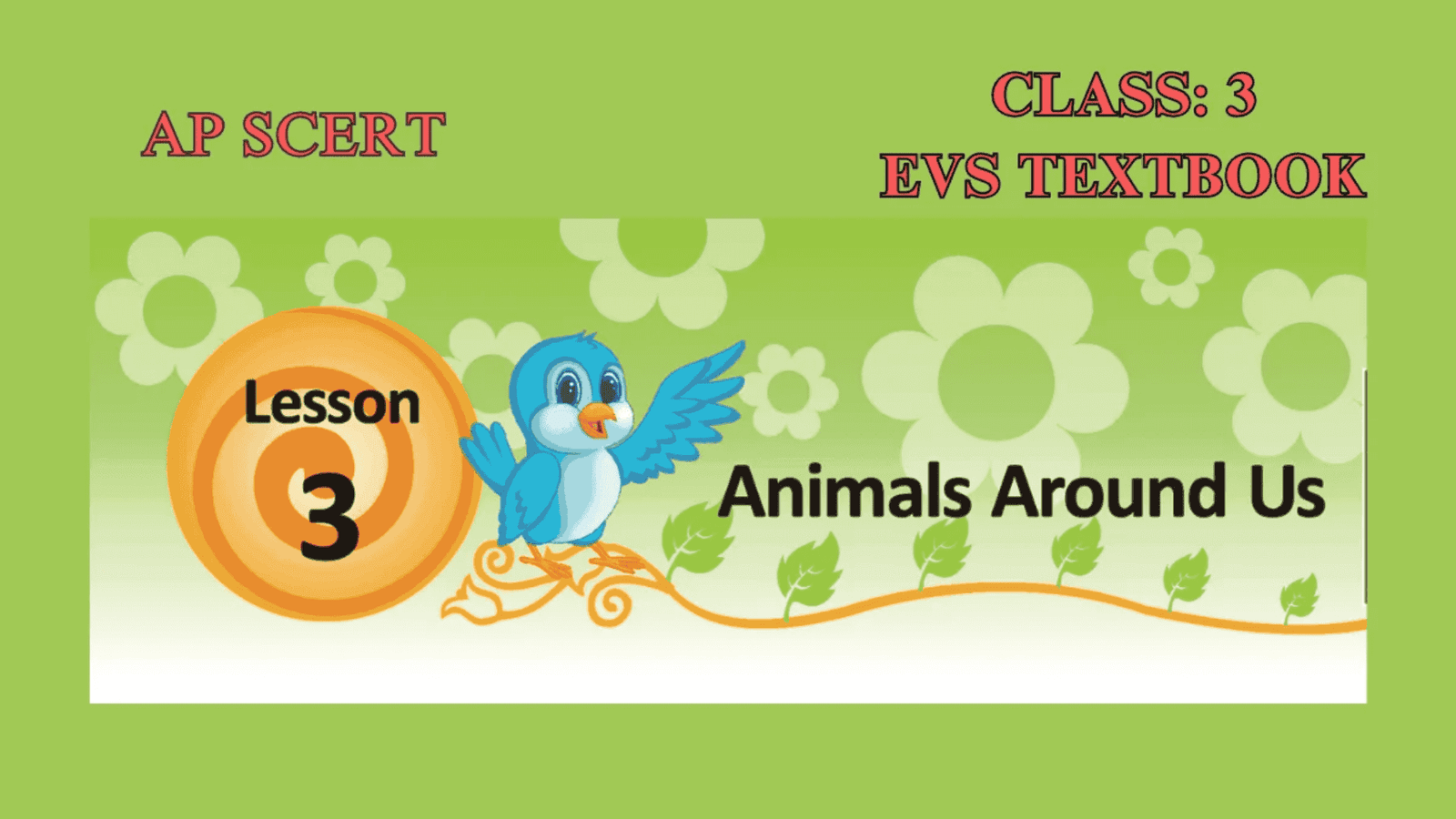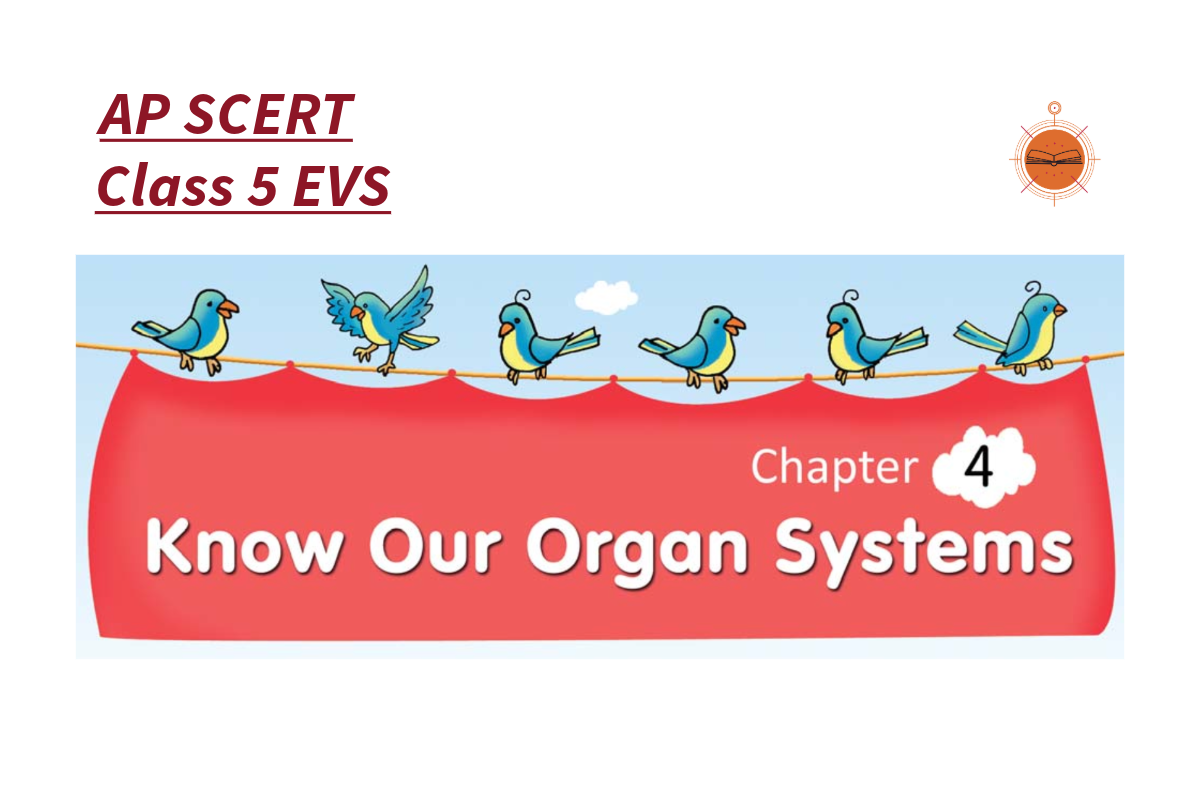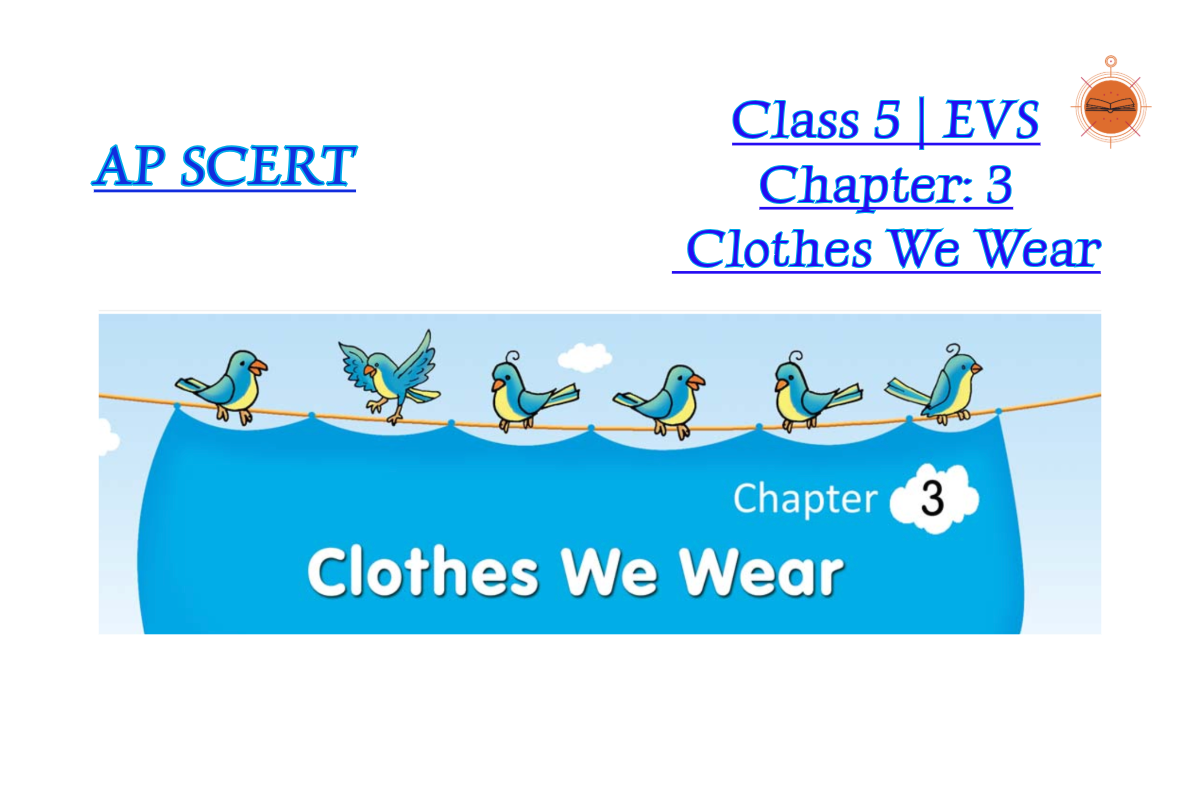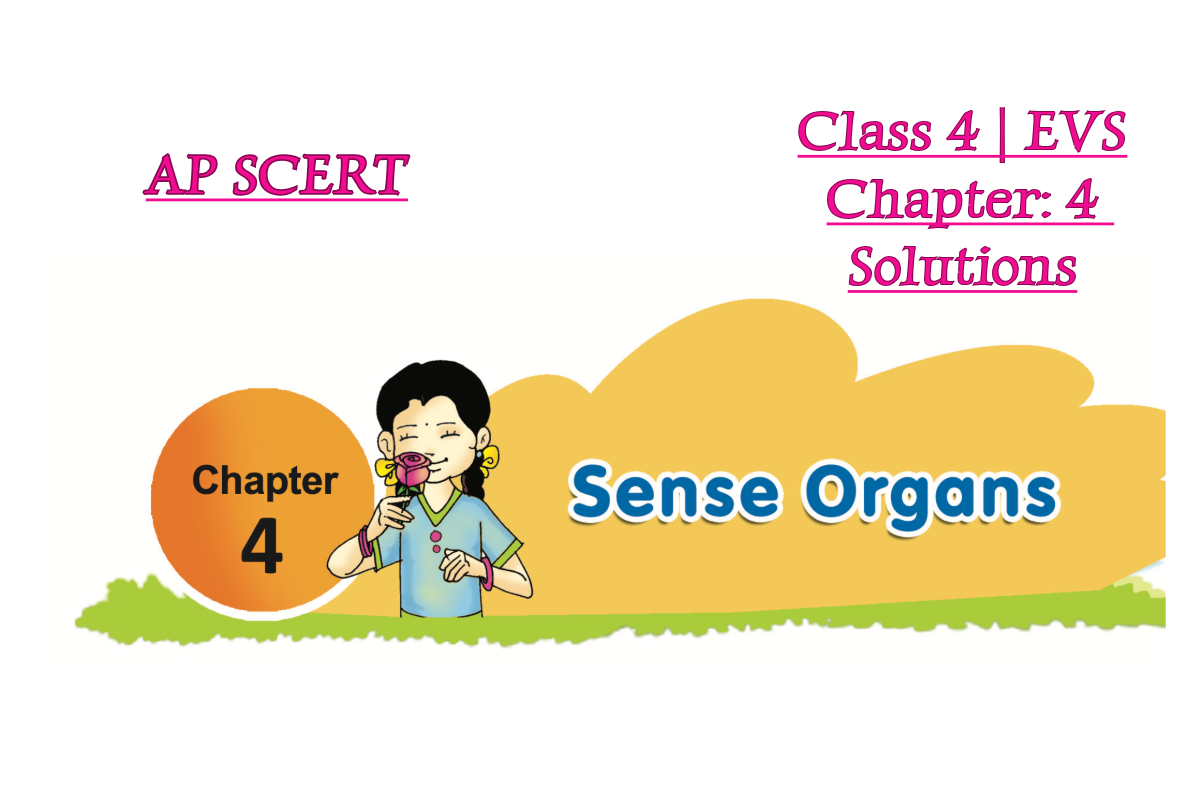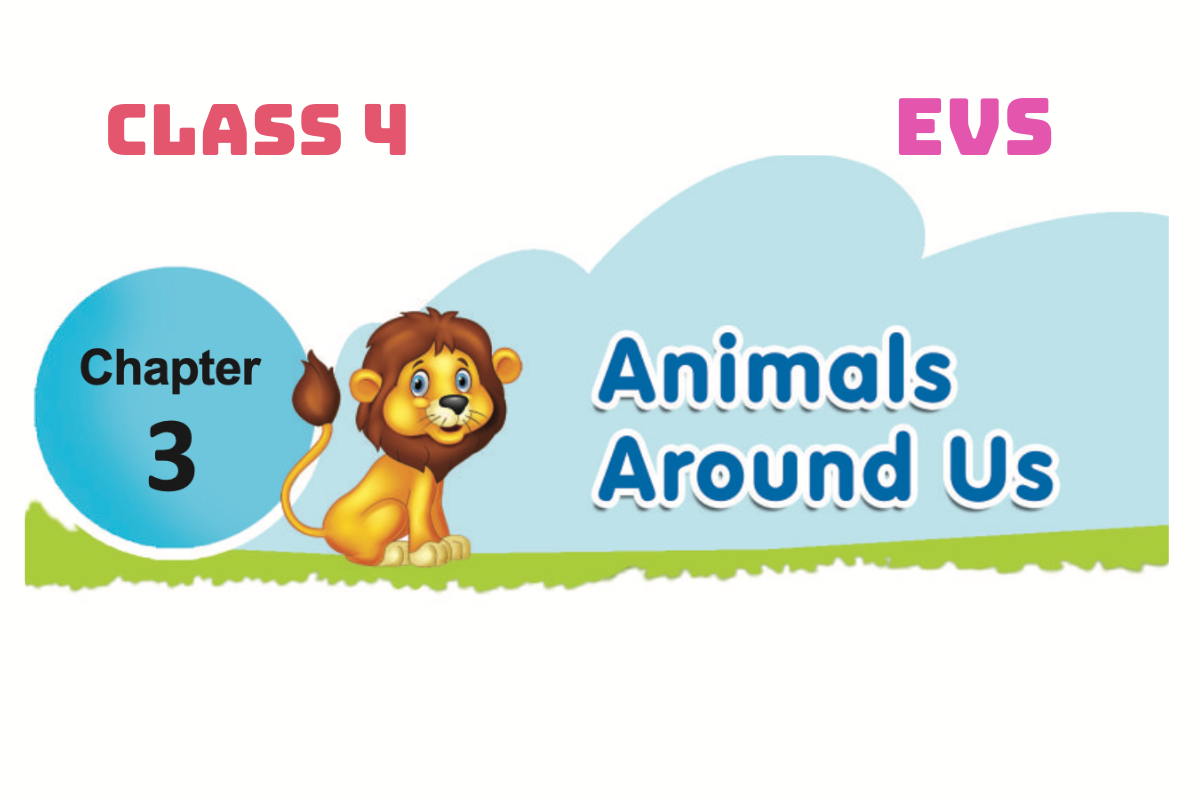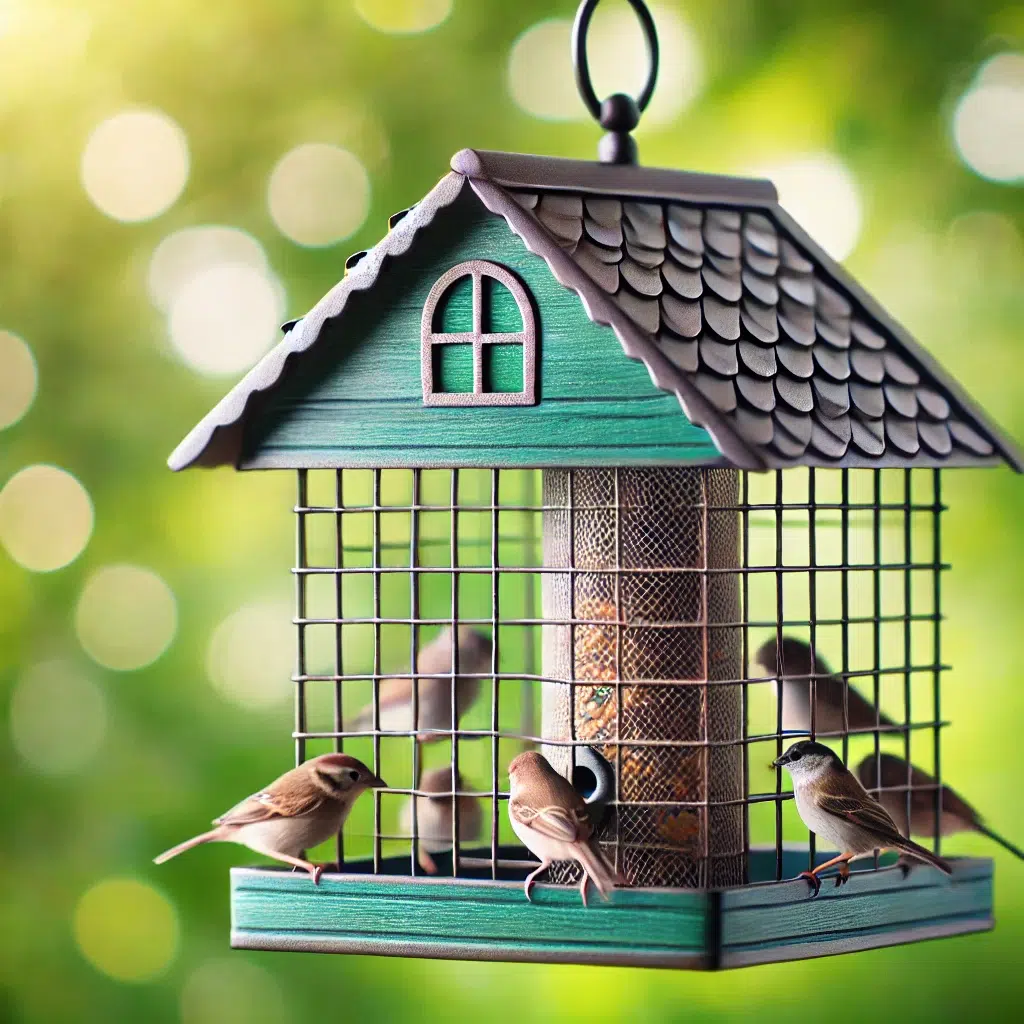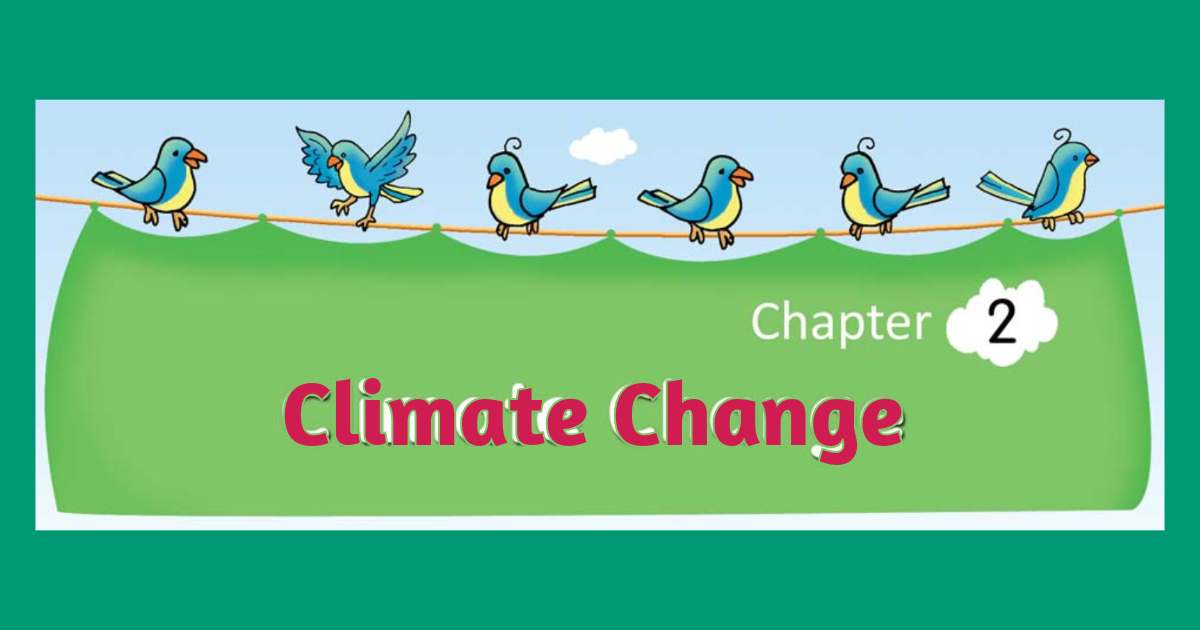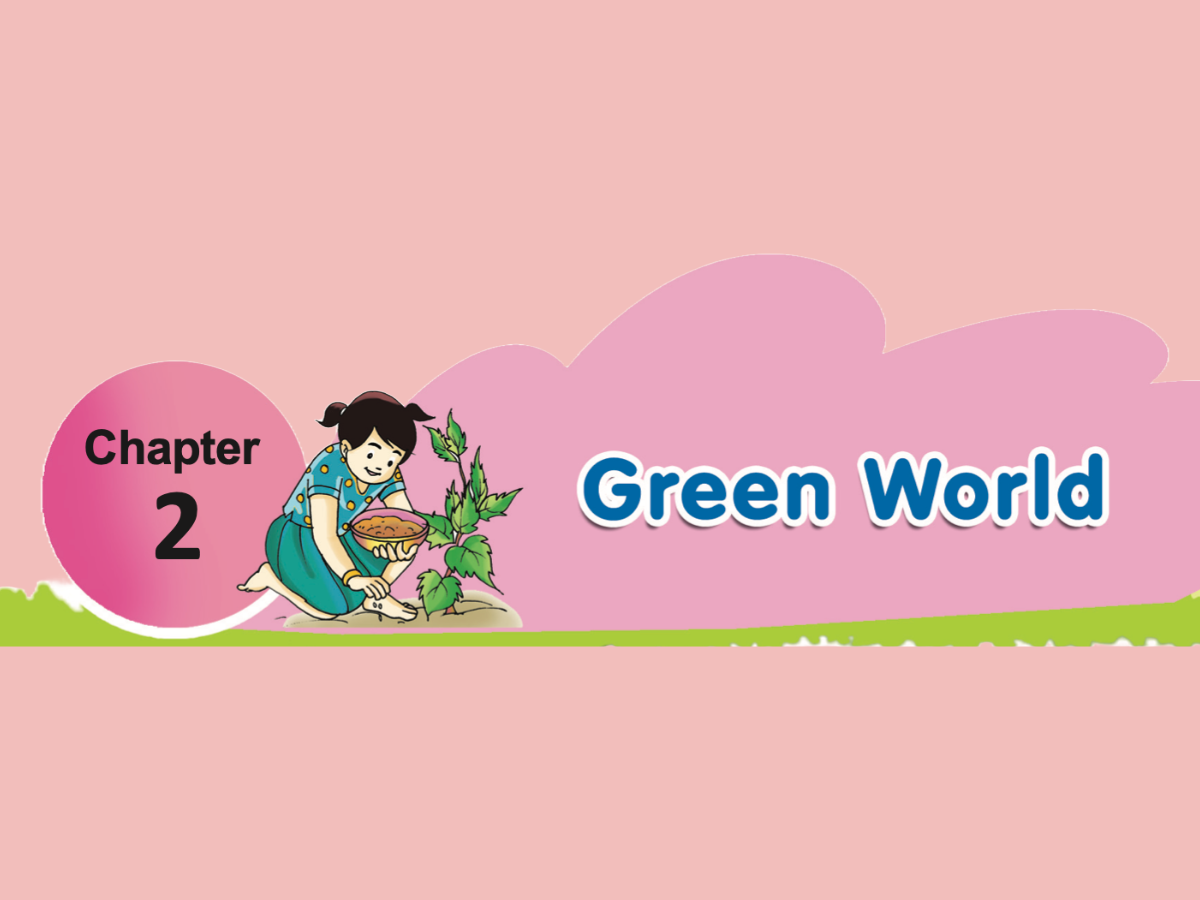Your cart is currently empty!
Author: MAHENDRA

Chapter:5 | Food Keeps us Fit and Healthy | Class 3 | EVS | Textbook solutions | Quiz | Lesson Plan
Here are the answers to “Improve Your Learning” for the lesson “Chapter:5 | Food Keeps us Fit and Healthy” along with a short quiz for the Curiosi students to test their knowledge and a perfect lesson plan for teachers to succeed in their class. Here you go.
StudentTeacherI. Conceptual Understanding
1. What will happen if we do not eat food?
• If we do not eat food, we will feel tired, weak, and unable to work, play, or grow. Food provides the energy we need to stay alive and healthy.
2. Name the food items that can be eaten raw.
• Carrot, cucumber, onion, tomato.
3. What is the importance of food?
• Food gives us energy to work, play, and grow. It helps in maintaining good health and keeps us alive.
II. Questioning
4. What questions would you ask your mother to prepare Pulihora?
• What ingredients are needed to prepare Pulihora?
• How do you mix the tamarind paste with rice?
• How long should the rice be cooked?
III. Experiments and Field Observations
5. What do you observe after soaking greengram overnight?
• After soaking greengram overnight in a wet cloth, tiny sprouts start to grow from the seeds. This shows the seeds are alive and can germinate.
IV. Information Skills, Projects
6. Prepare a list of food you get from plants and animals in your area.
• From Plants: Rice, wheat, vegetables (brinjal, tomato), fruits (mango, apple), pulses (red gram, black gram).
• From Animals: Milk, eggs, meat, honey.
V. Drawing Pictures and Model Making
7. Draw your favourite fruits and vegetables.
(Students can draw their favorite fruits like mango, apple, and vegetables like carrot, brinjal.)
VI. Appreciation
8. What good food habits would you suggest to your friends?
• Wash hands before and after eating.
• Chew food well and eat slowly.
• Avoid wasting food.
• Eat a variety of fruits and vegetables.
9. Write two slogans on avoiding wastage of food.
• “Save food, save lives!”
• “Don’t waste food; share it with those in need.”
Lesson Plan: Food Keeps us Fit and Healthy (Class 3 – Our World)
Subject: Environmental Studies (EVS) / Science Topic: Food Keeps us Fit and Healthy Grade Level: Class 3 Time Allotment: 6 Periods (approx. 35-40 minutes each)
Learning Outcomes:
By the end of this lesson, pupils will be able to:
- Identify the need for food for all living things.
- Recognize various foods available from plants and animals.
- Know that food is essential for birds and animals.
- Know the process of cooking food.
Materials Required:
- Textbook: “Food Keeps us Fit and Healthy (E).pdf” (Class 3 – Our World)
- Chart paper, markers, crayons/color pencils
- Pictures/flashcards of various food items (fruits, vegetables, grains, milk, eggs, meat)
- Pictures of different cooking methods (boiling, frying, steaming, roasting) and utensils
- Real examples of some raw and cooked food items (e.g., a raw carrot, a cooked potato – for demonstration, not tasting)
- Whiteboard/Blackboard
Period-wise Breakdown:
Period 1: Introduction to Food & Why We Eat Food
Objective: To introduce the concept of food and understand its basic need for all living things.
Introduction (5 minutes):
- Begin with a warm greeting: “Good morning, my healthy eaters! Today, we’re going to talk about something we all love and need every day – FOOD!”
- “Imagine a day without food. How would you feel? (Tired, hungry, no energy). Yes, food is super important!”
Activity 1: Storytelling & Discussion (15 minutes):
- Read aloud the story of John’s picnic with his family (Page 86).
- Observe the picture of the picnic (Page 86).
- Ask questions:
- “What did John’s family eat at the picnic?”
- “What food items did you eat yesterday?” (Encourage sharing).
- Make this a quick, interactive class survey. Ask a few students to share their meals for different times of the day, and note down a few common items on the board. This makes the activity more engaging and immediately relatable.
Activity 2: Why Do We Eat Food? (15 minutes):
- Read the story about John feeling hungry during a long journey (Page 88).
- Discuss: “Have you ever gone to school without taking breakfast? How did you feel?”
- Explain the importance of food: “If we do not take food, we cannot play, sit in the class, or work. Food gives us energy. We have to eat food to work, grow and stay alive.” (Page 88).
- Discuss: “Do people of all age groups eat the same kind of food?” (Lead into next period’s topic).
Closure (3-5 minutes):
- Summarize: “Today, we learned that food is essential for us to have energy, grow, and stay healthy. It’s like fuel for our bodies!”
- Preview: “Next time, we’ll discover that not everyone eats the same kind of food, and where our food comes from!”
- Homework: Ask students to list three reasons why they think food is important for them.
Period 2: Food for Different Age Groups & Sources (Plants)
Objective: To recognize that food needs vary by age and identify food obtained from plants.
Recap (5 minutes):
- “Good morning, everyone! Who can tell me one reason why we need to eat food? Great!”
Activity 1: Food for Different Age Groups (15 minutes):
- Read the story about John wanting to give peanuts to his infant brother and grandfather (Page 90).
- Discuss: “Why did mother stop John from giving peanuts to his brother? Why does John’s grandfather eat soft food?”
- Explain: “Infants don’t have teeth, and old people may lose their teeth. So, they need milk or soft food. Food habits change according to age.” (Page 90).
- Guide students to fill the table on “Food for different age groups” (Page 90). Clarify that filling this table is a homework activity, to be completed after the class discussion. This ensures students have time to ask their elders and brings real-world data into the next class.
Activity 2: Food from Plants (15 minutes):
- Introduce: “We get food from plants and animals.” (Page 90).
- Focus on Food from Plants: “We eat different parts of plants as food.” (Page 94).
- Discuss examples of edible plant parts:
- Roots: Carrot, Beetroot, Radish, Potato (Page 94).
- Stems: Ginger, Sugarcane (Page 94).
- Leaves: Amaranthus, Drumstick leaves, Spinach, Curry leaves (Page 94).
- Grains/Seeds: Paddy (Rice), Wheat, Pearlmillet, Cashew, Peas, Groundnuts, Pulses (redgram, greengram, blackgram) (Page 94, 98).
- Ask: “Is cabbage a flower or a leaf?” (Page 94). Instead of simply clarifying, turn this into a mini-discovery moment. Ask students to observe a picture of cabbage or, if possible, a real cabbage, and encourage them to guess based on its appearance. Then, confirm the answer and explain why it’s considered a leaf.
Closure (3-5 minutes):
- Summarize: “Today, we learned that food is different for different ages, and we get so many wonderful foods like roots, stems, leaves, and grains from plants!”
- Preview: “Tomorrow, we’ll continue exploring food from plants, focusing on fruits and flowers, and then move on to food from animals!”
- Homework: Ask students to list 5 food items they eat that come from plants.
Period 3: Food from Plants (Fruits & Flowers) & Identifying Vegetables
Objective: To continue exploring food from plants, focusing on fruits and flowers, and to practice identifying common vegetables.
Recap (5 minutes):
- “Hello, my budding botanists! Who can name one root vegetable and one leafy vegetable we discussed yesterday? Excellent!”
Activity 1: Fruits and Flowers as Food (15 minutes):
- Discuss Flowers as Food: “We eat the flowers of banana and cauliflower. Cloves (lavanga) are flavored buds. Saffron flowers are used in special food items.” (Page 96).
- Discuss Fruits as Food: “We love to eat fruits like mango, orange, jackfruit, papaya, apple, banana, grapes, muskmelon and watermelon.” (Page 96).
- Ask: “Do all fruits taste sweet? We must eat all fruits. They give us good health.” (Page 96).
- Clarify: “Tomato and cucumber are also fruits, but we eat these as vegetables.” (Page 96).
Activity 2: Identifying Vegetables (15 minutes):
- Activity (Page 92-93): “Identify the vegetables and write their names. Use the help box.” Enhance this activity to make it more interactive. Instead of just naming, turn it into a ‘Vegetable Detective’ game. Show pictures of vegetables one by one and ask students to describe their color, shape, and texture before revealing the name. This encourages observation skills. Guide students to identify and name brinjal, ladies finger, bottle gourd, cauliflower, onion, cucumber, beetroot, bittergourd, cabbage, drumstick. This can be done as a class activity or individually.
Closure (3-5 minutes):
- Summarize: “Today, we discovered that even flowers can be food, and we explored many delicious fruits! We also practiced identifying lots of common vegetables.”
- Preview: “Tomorrow, we’ll learn about food that comes from animals and discuss the difference between raw and cooked food!”
- Homework: Draw your favorite fruit and your favorite vegetable.
Period 4: Food from Animals & Raw vs. Cooked Food
Objective: To identify food obtained from animals and differentiate between raw and cooked food.
Recap (5 minutes):
- “Good morning, food detectives! Who can name one fruit that we eat? And one vegetable that is actually a fruit?”
Activity 1: Food from Animals (15 minutes):
- Introduce Food from Animals: “We eat eggs and meat as our food. We drink milk.” (Page 98).
- Discuss sources of milk: Cows, goats, buffaloes (Page 98).
- Discuss milk products: Curd, ghee, butter, cheese (Page 98).
- Discuss eggs and meat: Hens and ducks for eggs and meat. Sheep, goat, pig, buffalo for meat (Page 100).
- Discuss sea animals: Fish, prawns, crabs, snails (Page 100).
- Discuss Honey: “Bees collect nectar from flowers. They store it as honey in a comb. We get honey from honey comb.” (Page 100).
Activity 2: Raw vs. Cooked Food (15 minutes):
- Read the story about John eating raw vegetables while helping his mother (Page 100).
- Discuss: “Which vegetables can we eat directly? Can we eat brinjal without cooking?”
- Explain: “We cannot eat rice, meat etc. without cooking. We can eat some vegetables without cooking. For example: carrot, onion, cucumber (kheera) etc.” (Page 100).
- Guide students to fill the table for “Cooked” and “Raw” food items (Page 100).
Closure (3-5 minutes):
- Summarize: “Today, we learned about all the delicious food we get from animals, and the important difference between food we can eat raw and food we need to cook!”
- Preview: “Tomorrow, we’ll explore different ways we cook food and the tools we use in the kitchen!”
- Homework: List 3 food items from plants and 3 food items from animals that they eat.
Period 5: Cooking Methods & Utensils
Objective: To understand different cooking methods and identify the utensils used for them.
Recap (5 minutes):
- “Hello, my kitchen helpers! Who can name one food item we get from animals? And one food item that we must cook before eating?”
Activity 1: Why We Cook & Cooking Methods (20 minutes):
- Discuss: “Why do we cook certain items?” (Page 102).
- Explain: “Because, the food gets soft and tasty. The cooked food is easily digested. Some food items do not get easily digested when they are eaten raw.” (Page 102).
- Discuss: “Do we cook variety of food in the same way? Why?” (Page 102).
- Introduce different Cooking Methods (Page 102):
- Boiling: (e.g., rice, eggs)
- Frying: (e.g., papads, bajjis)
- Roasting: (e.g., corn)
- Steaming: (e.g., idly)
- Guide students to fill the “Cooking Method” table (Page 102). Clarify that this table should be filled as a homework assignment. Encourage students to interview their parents/guardians about different cooking methods and dishes prepared using them. In the next class, they can share their findings, making it a collaborative learning experience.
Activity 2: Identifying Utensils (10 minutes):
- Introduce Utensils: “We use utensils to cook food.” (Page 102).
- Discuss examples: Pan for frying, cooker for steaming and boiling, grill for roasting (Page 102).
- Activity (Page 102-104): “Identify the following pictures, and write for what purpose they are used.” (Pan, Idly cooker, Rice cooker, Spoon, Bowl, Slotted spoon). Guide students to identify and state their uses.
Closure (3-5 minutes):
- Summarize: “Today, we became kitchen experts! We learned why we cook food, different ways to cook, and the various utensils that help us prepare our meals.”
- Preview: “Tomorrow is our final review, where we’ll talk about good food habits and consolidate all our learning!”
- Homework: Ask students to help their parents identify 2-3 utensils in their kitchen and their uses.
Period 6: Good Food Habits & Review
Objective: To learn and practice good food habits and to review the entire lesson.
Recap (5 minutes):
- “Good morning, my wonderful class! Today is our review day! To get started, can anyone name one cooking method and one utensil used for it?”
Activity 1: Good Food Habits (15 minutes):
- Introduce “Good food habits” (Page 104).
- Read and discuss each habit with the students:
- Wash hands before and after having meal.
- Chew the food well and eat slowly.
- Do not leave food in plate, at home and in school.
- Eat all the vegetables in the sambar.
- Eat curry leaves and coriander in the curries.
- Sit properly while eating and do not spill food from plate.
- Wash the fruits and vegetables before eating or cooking.
- Activity (Page 104): “Read and tick ( ) the good food habits you have.” Students can self-assess.
- Discuss: “John’s family members sit together and eat. They turn off the TV and mobile phone, while eating. Why?” (Page 106). Emphasize mindful eating and family bonding.
Activity 2: Review & Project Work (15 minutes):
- Review “Key words” (Page 106): raw food, cooked food, digestion, healthy, recipe, habits. Discuss each term briefly.
- Review “What we have learnt” (Page 106) to summarize main points:
- Food is essential to live and work.
- Different foods are needed for different age groups.
- We get food from plants and animals.
- We eat various parts of plants.
- We get milk, meat, eggs from animals.
- We cook different food items in different methods using different utensils.
- Improve Your Learning (Page 106):
- Conceptual Understanding: “What will happen if we do not eat food?” “Name the food items that can be eaten raw.” “What is the importance of food?”
- Questioning: “What questions would you ask your mother to prepare Pulihora?”
- Project Work (Page 108):
- Experiments and field observations (point 5): “Soak some greengram for three hours in water. Drain the water, shift the soaked seeds into a wet cloth and tie it tightly. Leave it over night. Open it the next day. What do you observe?” (Discuss sprouting).
- Information skills, Projects (point 6): “Prepare a list of food you get from plants and animals in your area.”
- Drawing pictures and model making (point 7): “Draw your favourite fruits and vegetables.”
- Appreciation (Page 108):
- “What good food habits would you suggest to your friends?”
- “Write two slogans on avoiding wastage of food.”
Closure (3-5 minutes):
- “Fantastic work throughout this lesson, my amazing food experts! You’ve learned so much about why food is important, where it comes from, how we prepare it, and how to eat healthily. Remember, a healthy body starts with healthy food habits! Let’s make a promise to always eat well and avoid wasting food!”
Assessment:
- Formative Assessment: Observe student participation in discussions, activities, and group work. Check their completed tables, drawings, and self-assessment of good habits.
- Summative Assessment: Review the “Improve Your Learning” questions and project work.
Differentiation:
- For advanced learners: Encourage them to research a traditional recipe from their family and write down its ingredients and steps. They could also investigate different food groups and their benefits.
- For struggling learners: Provide simplified lists of food items. Focus on identifying basic food sources (plant/animal) and 2-3 essential good food habits. Use more visual aids and repetition.
Cross-Curricular Connections:
- Language Arts: Writing recipes, slogans, and short descriptions of food.
- Art: Drawing fruits and vegetables.
- Math: Counting food items, categorizing.
- Social Studies/Culture: Discussing different food items consumed in various regions or by different families.
- Science: Understanding digestion, nutrients (briefly).
This lesson plan is designed to make learning about “Food Keeps us Fit and Healthy” a practical, engaging, and enriching experience for Class 3 pupils, promoting healthy eating habits and an appreciation for food sources.
😜Test Your Knowledge👉

Chapter 4: Our Body | Class 3 | EVS | Textbook Solutions | Quiz | Lesson Plan
AP SCERT | Andhra Pradesh
Here are the answers to “Improve Your Learning” for the lesson “Our Body,” along with a short quiz for the Curiosi students to test their knowledge and a perfect lesson plan for teachers to succeed in their class. Here you go.
StudentTeacher1. Conceptual Understanding
1. Tell and write the uses of your body parts.
• Eyes: To see things around us.
• Nose: To breathe and smell.
• Mouth: To eat food and talk.
• Ears: To hear sounds.
• Hands: To write, hold things, and work.
• Legs: To walk, run, and jump.
2. Name the parts of the body that you use to speak over the phone.
• Ears (to hear), Mouth (to speak), and Hands (to hold the phone).
3. Write three good habits you have.
• Wash hands before and after eating.
• Brush teeth twice a day.
• Eat healthy food like fruits and vegetables.
II. Questioning and Hypothesis
4. What will happen if you are silent when someone touches your private parts?
• If you remain silent, the person may continue to harm you. You should immediately take action by following the three steps: scream “STOP,” run away, and inform a trusted adult.
III. Experiments and Field Observations
5. Ravi observed his dress in the mirror and wrote his feelings: “I look good, my dress is clean and healthy.” Observe your dress in the mirror and write your observations as Ravi.
• I look neat and tidy. My clothes are clean, and I feel fresh and healthy.
IV. Information Skills – Project Work
6. Observe your friends and write some good habits practised by them.
• They wash their hands before eating.
• They trim their nails regularly.
• They eat fruits and vegetables for a healthy diet.
V. Drawing Pictures and Model Making
7. Label the parts.

VI. Appreciation
8. What will you do after using the toilet?

After using the toilet, I will:
1. Flush the toilet properly.
2. Wash my hands thoroughly with soap and water.
3. Dry my hands with a clean towel or air dryer.
Lesson Plan: Our Body (Class 3 – Our World)
Subject: Environmental Studies (EVS) / Science Topic: Our Body Grade Level: Class 3 Time Allotment: 6 Periods (approx. 35-40 minutes each)
Learning Outcomes:
By the end of this lesson, pupils will be able to:
- Understand and speak about our body.
- Demonstrate healthy habits like brushing, handwash, drinking water etc.
- Identify and tell the parts of the body.
- Show concern towards differently abled.
- Tell about good and bad touch.
- Know how to avoid bad touch.
Materials Required:
- Textbook: “Our Body (E).pdf” (Class 3 – Our World)
- Chart paper, markers, crayons/color pencils
- Pictures/diagrams of the human body and its parts
- Soap, water, towel (for handwashing demonstration)
- Objects for sense organ activity (flower, bell, sweet, book, pencil, cotton, wool)
- Whiteboard/Blackboard
- Mirror (optional, for classroom observation)
Period-wise Breakdown:
Period 1: Introduction to Our Body & Main Parts
Objective: To introduce the concept of the human body, identify its major external parts (head, trunk, limbs), and understand their basic functions.
Introduction (5 minutes):
- Begin with a warm greeting: “Good morning, everyone! Today, we’re going to explore the most amazing machine in the world – our very own body!”
- “How many of you looked in the mirror this morning? What did you see?” (Guide them to think about their body parts).
Activity 1: Observing Our Body (15 minutes):
- Read aloud the introductory story about Raghu getting ready for school (Page 68).
- Observe the picture of the human body with labeled parts (Page 68).
- Ask questions:
- “Can you name some parts of your body that you see here?”
- “How many hands do you have? How many legs?”
- Introduce the three main divisions of the body: Head, Trunk, and Limbs (hands and legs). Explain how the neck connects the head to the trunk and helps in movement (Page 68).
Activity 2: Body Parts in Action (15 minutes):
- Show the pictures on Page 70 (actions like reading, brushing teeth, cutting cake, walking, running, playing football).
- “Look at these pictures. What are the children doing? Which body parts are they using for each action?”
- Have students demonstrate simple actions like clapping, walking, jumping, and identify the body parts involved.
- Discuss: “What activities can we do with our hands? What activities can we do with our legs?” (Page 70).
Closure (3-5 minutes):
- Summarize: “Today, we started our journey into understanding our body! We learned about its main parts and how they help us do different things.”
- Preview: “Next time, we’ll focus on our amazing sense organs and how they help us explore the world!”
- Homework: Ask students to observe their own body in a mirror at home and draw a picture of themselves, labeling the three main parts (head, trunk, limbs) and one action each part helps them do. They can share their drawings and observations in the next class.
Period 2: Sense Organs & Their Functions
Objective: To identify the five sense organs and understand their specific functions. (Learning Outcomes: Identify and tell the parts of the body, Understand and speak about our body).
Recap (5 minutes):
- Begin with a quick ‘Body Part Simon Says’ game (e.g., ‘Simon Says touch your head!’, ‘Simon Says wiggle your fingers!’). “Good morning, everyone! Who can name the three main parts our body is divided into? (Head, Trunk, Limbs). Excellent!”
Activity 1: Exploring Face Parts and Sense Organs (20 minutes):
- Discuss “What parts do you look at when you see your face in the mirror?” (Page 70).
- Show the picture of the face with labeled parts (Head, Hair, Forehead, Eye, Nose, Mouth, Cheek, Chin, Ear) (Page 70).
- Introduce the five sense organs: Eyes (for sight), Nose (for smell), Tongue (for taste), Ears (for hearing), and Skin (for touch).
- Discuss the function of each sense organ (Page 70):
- Eyes: See things around us.
- Nose: Breathe and smell.
- Mouth: Eat food and talk (Tongue for taste).
- Ears: Hear.
- Activity 1 (Page 72): “Name the parts that help us to…” Go through the list (Watch T.V., Listen to music, Sing songs, Smell flowers, Taste chocolates, Draw a picture, Kick the ball) and have students identify the body parts.
Activity 2: Sense Organ Challenge (10 minutes):
- Activity 2 (Page 72): “Place some flowers, bell, sweet, book, pencil, cotton, wool on a table. Blindfold your friends one by one and ask them to identify the things on the table. Instruct them that they can identify the things with touch, sound, taste or smell.” (Conduct this activity in small groups or as a demonstration).
- Discuss: “If you are blind-folded you cannot see things. You can use other body parts like nose, ears and hands to know the things” (Page 72).
Closure (3-5 minutes):
- Summarize: “Today, we learned about our five amazing sense organs and how they help us see, hear, smell, taste, and feel the world around us!”
- Preview: “Tomorrow, we’ll see how all our body parts work together and learn about showing kindness to everyone, including those who are differently abled.”
- Homework: Ask students to list their five sense organs and one thing each helps them do.
Period 3: Body Parts Coordination & Differently Abled
Objective: To understand that body parts work in coordination and to develop empathy and concern for differently-abled people. (Learning Outcomes: Show concern towards differently abled, Understand and speak about our body).
Recap (5 minutes):
- “Hello, my super learners! Can you tell me which sense organ helps you smell a delicious meal? How about hear your favorite song?”
Activity 1: Body Parts in Coordination (10 minutes):
- Discuss the question: “Can we ride a bicycle only with our legs? What other body parts are involved in cycling?” (Page 72).
- Explain: “We use body parts in coordination to perform different work.” Give other examples like writing, playing a sport, etc.
Activity 2: Understanding Differently Abled Individuals (20 minutes):
- Ask: “Have you seen anybody who does not have eyes or legs?” (Page 72).
- Introduce Raji and Somu (Page 74). Read their stories:
- Raji lost her leg in an accident and uses a wheelchair. Her friends help her.
- Somu was born blind and uses his hands to touch and feel things.
- Discuss: “Like Somu and Raji, there are lots of people who are physically challenged. It may be due to an accident or birth defects” (Page 74).
- Emphasize kindness and help:
- “When we see them, we should be kind to them and help them.”
- “Do not call them with nicknames.”
- “Be friendly and play together with them.” (Page 74).
Closure (3-5 minutes):
- Summarize: “Today, we learned that our body parts work together, and most importantly, we learned to be kind, helpful, and friendly to everyone, especially those who are differently abled.”
- Preview: “Tomorrow, we’ll talk about how to keep our amazing bodies healthy and strong!”
- Homework: Ask students to think of one way they can be helpful to someone who might need assistance.
Period 4: Healthy Body & Good Habits (Part 1)
Objective: To understand the importance of a healthy body and learn about essential hygiene habits. (Learning Outcomes: Demonstrate healthy habits like brushing, handwash, drinking water etc., Understand and speak about our body).
Recap (5 minutes):
- “Good morning, compassionate kids! Who can tell me one way we can be friendly to someone who is differently abled?”
Activity 1: Why a Healthy Body? (10 minutes):
- Introduce the “Healthy Body” section (Page 74).
- Read the story about Raju being unwell. Discuss: “Can you guess, why Raju was not well?” (Guide them to think about not following good habits).
- Emphasize: “We should always keep our body clean and eat healthy food to stay strong. A healthy body is needed to grow and become a strong person.” (Page 74).
Activity 2: Learning Good Habits (20 minutes):
- Introduce “Good habits to stay healthy” (Page 76). Discuss each habit with pictures:
- Brush your teeth twice a day.
- Take bath daily.
- Trim nails once in a week.
- Drink plenty of water.
- Exercise daily.
- Eat fruits and vegetables.
- Focus on Handwashing: “Do you know how to wash your hands?” (Page 76).
- Demonstrate the steps of handwashing as shown in the picture (Palm to Palm, Between fingers, Back of hands, Base of thumbs, Back of fingers, Finger nails, Wrists, Rinse and wipe dry).
- Emphasize: “Wash your hands with soap after using toilet. Wash your hands before and after eating. If you don’t wash your hands… you may fall sick.” (Page 76).
Closure (3-5 minutes):
- Summarize: “Today, we learned why being healthy is so important and practiced some key habits like brushing and proper handwashing!”
- Preview: “Tomorrow, we’ll continue with more good habits and learn about keeping our private parts safe.”
- Homework: Practice the handwashing steps at home. List three good habits they will try to follow daily.
Period 5: Good Habits (Part 2) & Private Parts
Objective: To reinforce good habits and introduce the concept of private parts and personal safety. (Learning Outcomes: Demonstrate healthy habits, Tell about good and bad touch, Know how to avoid bad touch).
Recap (5 minutes):
- “Hello, my healthy helpers! Who can show me how to brush their teeth properly? And what’s one reason why handwashing is so important?”
Activity 1: Revisiting Good Habits (10 minutes):
- Let us check (Page 78): “Check how good you are. Write tick mark (/) or wrong (x) mark against each.” Go through the list of habits (Eat good food, Play video games, Drink plenty of water daily, Wash hands after using toilet, Wash hands before taking food, Take bath monthly, Do not brush teeth daily, Trim nails once in a month) and have students mark them. Correct misconceptions.
- Briefly discuss “Do You Know” about fingers (Page 78).
Activity 2: Understanding Private Parts (20 minutes):
- Introduce “Good touch and Bad touch” (Page 78).
- Explain: “Some parts of the body are called private parts.” Show the picture and identify Lips, Chest, Bottom, Between Legs (Page 78).
- Emphasize: “No one should see or touch these parts. And it is not right to touch, see or talk about those parts by someone older.” (Page 80).
- Clarify: “When we were children, mother and father might have touched us to help us to take bath or clean ourselves. That is not a secret and it is okay for a small baby or kid to get help with bathing.” (Page 80).
Closure (3-5 minutes):
- Summarize: “Today, we reviewed our healthy habits and learned about private parts, understanding that they are special and should not be touched by others.”
- Preview: “Tomorrow is a very important discussion about good touch and bad touch, and what to do if someone makes us uncomfortable.”
- Homework: Ask students to draw a picture of a healthy habit they practice.
Period 6: Good Touch, Bad Touch & Review
Objective: To clearly distinguish between good and bad touch, and to empower students with strategies to deal with bad touch. (Learning Outcomes: Tell about good and bad touch, Know how to avoid bad touch).
Recap (5 minutes):
- “Good morning, my brave learners! Today, we have a very important discussion. Can you remind me what we learned about private parts?”
Activity 1: Good Touch vs. Bad Touch (15 minutes):
- Define Good Touch: “Good touch is a touch that cares for us or makes us feel safe like your mother hugging you or your father holding your hand while walking.” Give examples: good touch hug, kissing on head and cheeks, shaking hands, putting hands on shoulder by friends (Page 80).
- Define Bad Touch: “Bad touch is a touch which makes us feel sad, angry, scared or confused. If anyone touches the private parts it is called bad touch. Because it makes us uncomfortable. Don’t let anyone touch those private parts.” (Page 80).
- Emphasize: “Anyone can make us uncomfortable or scary by their bad touch. It can be by a known person or an unknown person.” (Page 82).
Activity 2: What to Do if Someone Touches (10 minutes):
- Teach the three steps to deal with bad touch (Page 80):
- Scream ‘STOP’ / Say “Don’t touch” in a loud voice.
- Run away from that place / Leave the spot quickly.
- Inform one adult whom you trust / Tell elders (like parents or teacher) till you get help.
- Reassure: “We don’t have to feel bad for informing about bad touch. It is not our fault. So immediately inform your parents. Say ‘NO’ to Bad touch.” (Page 82).
- Introduce CHILD LINE (Page 82): “CHILD LINE is a national, 24×7, free, phone emergency outreach service for children in need of care and protection. Number: 1098.”
Activity 3: Review & Project Work (10 minutes):
- Review “Key words” (Page 82) and “What we have learnt” (Page 82-84) to summarize the entire lesson.
- Improve Your Learning (Page 84):
- Conceptual Understanding: “Tell and write the uses of your body parts.” “Name the parts of the body that you use to speak over the phone.” “Write three good habits you have.”
- Questioning and Hypothesis: “What will happen if you are silent when someone touch your private parts?”
- Project Work (Page 84):
- Experiments and field observations (point 5): “Ravi observed his dress in the mirror and wrote his feelings… Observe your dress in the mirror and write your observations as Ravi.”
- Information skills – Project work (point 6): “Observe your friends and write some good habits practised by them.”
- Drawing pictures and model making (point 7): “Label the parts.” (Refer to the face diagram on Page 84).
- Appreciation (Page 84, point 8): “What will you do after using toilet?” Discuss the importance of cleanliness.
Closure (3-5 minutes):
- “Fantastic work throughout this lesson, my amazing students! You’ve learned so much about your incredible bodies, how to keep them healthy, how to be kind to everyone, and most importantly, how to keep yourselves safe. Remember, your body is special, and you have the right to say NO to any touch that makes you feel uncomfortable!”
Assessment:
- Formative Assessment: Observe student participation in discussions, demonstrations, and activities. Check their completed exercises and drawings.
- Summative Assessment: Review the “Improve Your Learning” questions and project work.
Differentiation:
- For advanced learners: Encourage them to research different types of exercises or healthy foods. They could also create a short skit demonstrating good and bad touch scenarios and how to react.
- For struggling learners: Provide simplified explanations and more visual cues. Offer one-on-one guidance during activities. Focus on identifying major body parts and 2-3 key good habits. Use role-playing for good/bad touch in a safe, controlled manner with the teacher.
Cross-Curricular Connections:
- Language Arts: Encourage students to write short sentences or paragraphs about their favorite body part, a good habit, or a safety rule.
- Art: Drawing and labeling body parts, illustrating good habits.
- Physical Education: Reinforce exercise and healthy movement.
- Social-Emotional Learning: Empathy towards others, personal safety, self-care.
This lesson plan is designed to make learning about “Our Body” comprehensive, engaging, and empowering for Class 3 pupils, covering both scientific understanding and crucial life skills.
😜Test Your Knowledge👉

Chapter 3: Animals Around Us | Class 3 | EVS Solutions | Quiz | Lessson Plan
Here are the answers to “Improve Your Learning” for the lesson “Chapter 3: Animals Around Us” along with a short quiz for the Curiosi students to test their knowledge and a perfect lesson plan for teachers to succeed in their class. Here you go. #AP SCERT #Andhra Pradesh
StudentTeacher1. Conceptual Understanding
1. Tell and write the names of five pet animals.
• Dog, Cat, Rabbit, Parrot, Fish.
2. How do animals move from one place to another?
Animals move in different ways:
• Birds fly using wings.
• Fish swim using fins and tails.
• Snakes crawl using their body.
• Kangaroos hop using strong hind legs.
• Dogs and cows walk on four legs.
3. How can we help the animals and birds around us?
• Provide food and water to animals and birds.
• Avoid disturbing or harming their habitats.
• Protect them by keeping the environment clean and safe.
II. Questioning and Hypothesis
4. Who am I?
• A) I am long and shiny. I crawl and live in an anthill.
Answer: Snake.
• B) I live in water. I breathe with gills.
Answer: Fish.
• C) I have four legs. I give milk. I eat leaves.
Answer: Cow.
• D) I have wings. I fly high in the sky.
Answer: Bird.
III. Experiments and Field Observations
5. Some birds can fly, some birds cannot. Observe birds in your surroundings and categorize them under the proper headings.

IV. Information Skills – Project Work
6. Collect or draw pictures of two animals from each category and paste them.

V. Drawing Pictures and Model Making
7. Colour the pictures given below.

VI. Appreciation
8. Write three preventive measures to keep mosquitoes away.
• Avoid stagnant water to prevent mosquito breeding.
• Use mosquito nets or repellents while sleeping.
• Keep the surroundings clean and dispose of garbage properly.
Lesson Plan: Animals Around Us (Class 3 – Our World)
Subject: Environmental Studies (EVS) / Science Topic: Animals Around Us Grade Level: Class 3 Time Allotment: 6 Periods (approx. 35-40 minutes each)
Learning Outcomes:
By the end of this lesson, pupils will be able to:
- Speak about animals, the food they eat, where they live and how they help us.
- Identify different animals in their surroundings.
- Identify simple features (movements / sounds) of animals in their surroundings.
- Differentiate types of animals based on their dwelling places.
- Develop sensitivity towards animals in their surroundings.
- Share information on how they help animals.
Materials Required:
- Textbook: “Animals Around Us(E).pdf” (Class 3 – Our World)
- Pictures/flashcards of different animals (domestic, wild, terrestrial, aquatic, amphibians)
- Chart paper, markers, crayons/color pencils
- Science notebook for drawing/tracing
- Optional: Audio clips of various animal sounds
- Whiteboard/Blackboard
Period-wise Breakdown:
Period 1: Introduction to Animals & Domestic/Wild Animals
Objective: To introduce the concept of animals and help students identify domestic and wild animals (Learning Outcomes: Identify different animals in their surroundings, Speak about animals, where they live and how they help us).
Introduction (5 minutes):
- Begin with a warm greeting: “Good morning, my little animal explorers! Today, we’re going to dive into the exciting world of animals that live all around us!”
- “Imagine our world without animals. What would it be like? (Guide them to think about pets, farm animals, animals in forests). Yes, animals are an important part of our world!”
Activity 1: Storytelling & Discussion (15 minutes):
- Read aloud the story of Srinu’s visit to his uncle’s agricultural farm (Page 46).
- Observe the picture of the agricultural farm (Page 46).
- Ask questions:
- “What animals do you see in the picture of the farm?”
- “What animals do you see in your surroundings?”
- Facilitate a short discussion about what animals they know.
Activity 2: Classifying Domestic and Wild Animals (15 minutes):
- Explain that animals live in different places and help us in many ways (Page 48).
- Introduce Domestic Animals: “Animals that live with us or are kept on farms are called domestic animals.” Show pictures (Page 48).
- Discuss Pet Animals (e.g., dogs, cats) and how they help (dogs guard, cats catch mice) (Page 48).
- Discuss Farm Animals (e.g., cows, goats, hens, horses) and their uses (milk, eggs, meat, carrying loads) (Page 48).
- Introduce Wild Animals: “Animals that live in forests are called wild animals” (Page 50). Show pictures (Page 48). Give examples like lion, tiger, bear, elephant (Page 50).
- Activity-1 (Page 50): “Look at the picture, mark ‘D’ for domestic animals and ‘W’ for wild animals.” Do this together or individually.
Closure (3-5 minutes):
- Summarize: “Today, we learned about the different animals around us, especially distinguishing between domestic animals (pets and farm animals) and wild animals.”
- Preview: “Next time, we’ll discover how these amazing animals move from one place to another!”
- Homework: Observe animals in their neighborhood or from books/TV and identify whether they are domestic or wild.
Period 2: Animal Movements
Objective: To help students understand and identify different ways animals move.
Recap (5 minutes):
- “Good morning, everyone! Who can name one domestic animal and one wild animal we discussed yesterday? Great!”
Activity 1: Exploring Animal Movements (25 minutes):
- Read the story about Madhavi and the parrot (Page 50). Discuss: “What helped the parrot to fly away?”
- Discuss the question: “Do you know how animals move from one place to another?” (Page 50).
- Explain various modes of movement with examples (Page 50):
- Walk/Run: Dogs, cows, elephants use their legs.
- Crawl: Lizards, chameleons, snakes.
- Jump/Hop: Kangaroos, frogs use their legs.
- Fly: Birds (parrots, pigeons, crows) use their wings (Page 50).
- Swim: Fishes use fins and tails (Page 50).
- Activity-2 (Page 52): “Animals move in different ways to go from one place to another. Observe the pictures. Write how they move about.” Guide students to fill in the blanks (e.g., “pigeon and crow can fly”).
Closure (3-5 minutes):
- Summarize: “Fantastic work today! We explored the many amazing ways animals move – walking, crawling, flying, swimming, and jumping!”
- Preview: “Tomorrow, we’ll learn about where different animals live – their homes!”
- Homework: Observe how different animals move (e.g., a dog, a cat, a bird outside, or even insects).
Period 3: Dwelling Places of Animals
Objective: To help students classify animals based on their living places: terrestrial, aquatic, and amphibians.
Recap (5 minutes):
- “Hello, my animal explorers! Can you show me with your hands how a bird flies? How about how a snake crawls? Great!”
Activity 1: Discovering Animal Homes (15 minutes):
- Read the “My Home” section about the rabbit running into its burrow (Page 52).
- Discuss: “Do you know where other animals live?” (Page 52).
- Show the picture of different animals in their habitats (Page 54).
- Explain that animals live in different places: some on trees, some in water, and some on land (Page 54).
Activity 2: Classifying Animals by Habitat (20 minutes):
- Introduce Terrestrial Animals: “Animals that live on land are called terrestrial animals.” Give examples: cow, dog, cat, hen (Page 54).
- Introduce Aquatic Animals: “Animals that live in water are called aquatic animals.” Discuss their body features like boat-shaped bodies, fins, tails, and gills that help them live in water (Page 54). Give examples: fish.
- Introduce Amphibians: “Animals that live both on land and in water are called amphibians.” Discuss their moist skin, webbed feet, strong hind limbs (Page 54). Give examples: frog, salamander.
- Activity-3 (Page 54): “Observe the picture, tell and write the names of the animals and their living places.”
- Activity-4 (Page 56): “Write the names of animals according to the places they live.” Guide students to fill in the table for “Terrestrial,” “Aquatic,” and “Amphibians.”
Closure (3-5 minutes):
- Summarize: “Today, we learned about the different homes of animals – on land, in water, and both! We now know about terrestrial, aquatic, and amphibious animals.”
- Preview: “Next time, we’ll find out what different animals like to eat!”
- Homework: Draw or write about one animal from each category (terrestrial, aquatic, amphibian) and where it lives.
Period 4: Food Habits of Animals (Herbivores, Carnivores, Omnivores)
Objective: To help students understand and classify animals based on their food habits.
Recap (5 minutes):
- “Good morning, curious minds! Can you name one animal that lives in water? How about one that lives on land?”
Activity 1: Exploring Animal Diets (25 minutes):
- Read the story about Raghu giving a biscuit to the puppy (Page 58). Discuss: “Do you know what animals eat?”
- Explain that animals eat different types of food (Page 58).
- Introduce Herbivores: “Animals that eat only grass and plant products are called herbivores.” Show pictures (Page 58). Give examples: cows, buffaloes, donkeys, horses, elephants, deer, squirrels (Page 58).
- Introduce Carnivores: “Animals that eat the meat of other animals are called carnivores.” Show pictures (Page 58). Give examples: tigers, lions, foxes, crocodiles (Page 58).
- Introduce Omnivores: “Animals that eat both plants and animals are called omnivores.” Show pictures (Page 58). Give examples: bears, crows, monkeys, dogs (Page 58).
- Discuss Natural Scavengers: “Vultures, crows, and foxes consume dead animals. They are called natural scavengers” (Page 58).
- Think and Discuss (Page 58):
- “What is the food of mosquitoes?”
- “To which category do you belong – herbivore, carnivore or omnivore?”
Activity 2: Matching Animals and Food (5 minutes):
- Activity-5 (Page 60): “Match the animals with their prey.” Work through this activity together.
Closure (3-5 minutes):
- Summarize: “Excellent work today! We learned that animals have different diets and can be herbivores, carnivores, or omnivores!”
- Preview: “Tomorrow, we’ll discover how animals talk to each other and why it’s so important to protect them!”
- Homework: Draw your favorite animal and what it eats. Try to classify it as a herbivore, carnivore, or omnivore.
Period 5: Animal Communication & Protection
Objective: To teach students about animal communication and the importance of protecting animals.
Recap (5 minutes):
- “Hello, my smart scientists! Can you name one herbivore? One carnivore? One omnivore? Fantastic!”
Activity 1: How Animals Communicate (15 minutes):
- Read the story of Kusuma and her friends making animal sounds (Page 60). Discuss: “Do you know how animals communicate?”
- Explain that animals use sounds to warn others, mark territory, or identify themselves (Page 60).
- Think and Discuss (Page 60): Discuss sounds of different animals they might have heard (calf, cuckoo, lizard, cricket).
- Let us Do (Page 62): “Let children make the sounds of the given animals. Do you know how these animals make sounds? In the box below you will find the sounds of animals. Pick the right one.” Guide students to fill the table (e.g., Dog – Barks).
Activity 2: Protecting Animals (15 minutes):
- Read the story of Kiran and Srinu saving the baby bird (Page 62). Discuss their actions.
- Emphasize the message: “Our surroundings become pleasant when we protect all the creatures around us. We should protect the birds and animals” (Page 62).
- Discuss harmful actions to avoid: breaking bird eggs, disturbing nests, plucking wings, throwing stones at street dogs (Page 62).
- Reinforce: “We must protect animals. They also feel pain like us. We should allow them to live happily around us. We must give food and water to birds and other animals and protect them” (Page 62).
Closure (3-5 minutes):
- Summarize: “Wonderful work today, animal protectors! We learned that animals communicate with sounds and, most importantly, that it is our responsibility to care for and protect them.”
- Preview: “Tomorrow is our final review and project day, where we’ll celebrate all we’ve learned!”
- Homework: Think of one way you can help protect animals around you (e.g., providing water for birds, not disturbing nests).
Period 6: Review, Key Words & Project Work
Objective: To review all concepts learned in the lesson and complete project-based activities.
Recap (5 minutes):
- “Good morning, my wonderful class! Today is our review day! To get started, can anyone share their favorite amazing fact about animals that we’ve learned so far?”
Activity 1: Key Words and What We Have Learnt (15 minutes):
- Go through the “Key words” section (Page 62): agricultural farm, animals, birds, insects, wild animals, domestic animals, herbivore, carnivore, omnivore, terrestrial, aquatic, amphibians, protect, nest, communicate. Discuss each term briefly.
- Review “What we have learnt” (Page 64) to summarize main points:
- Animals and birds live with us.
- Animals are of two types: domestic and wild.
- Animals move in various ways.
- Animals live on land and in water.
- Animals eat different types of food.
- Animals make different sounds to communicate.
- People should have concern towards animals and birds.
Activity 2: Improve Your Learning Questions (10 minutes):
- Conceptual Understanding (Page 64):
- “Tell and write the names of five pet animals.”
- “How do animals move from one place to another?”
- “How can we help the animals and birds around us?”
- Questioning and Hypothesis (Page 64): “Say who am I?” riddles (snake, fish, cow, bird).
Activity 3: Project Work & Appreciation (10 minutes):
- Project Work (Page 66):
- Information skills – Project work (point 6): “Collect or draw the pictures of two animals of each category (Pet, Domestic, Wild, Birds) and paste them in the given space.” (Assign as a long-term project).
- Drawing pictures and model making (point 7): “Colour the pictures given below (elephant, fish).”
- Experiments and field observations (point 5): “Some birds can fly, some birds cannot. Observe birds in your surroundings and categorize them under the proper headings (can fly / cannot fly).” Discuss examples (Crow, Sparrow, Parrot, Penguin, Ostrich, Hen).
- Appreciation (Page 66, points 8 and 78): Discuss questions like:
- “You know that mosquitoes harm us. Write three preventive measures to be taken to keep mosquitoes away.”
- “How do you feel if you see someone cutting the branches of the trees around you? What will you do then?” and “What will you do if you see the fallen leaves in your school ground?” (Reiterates sensitivity towards nature).
Closure (3-5 minutes):
- “Fantastic work throughout this lesson, my amazing animal experts! You’ve learned so much about the incredible animals around us – where they live, what they eat, how they move, and how they communicate. Remember, all living beings deserve our respect and protection. Let’s make a promise to always be kind to animals!”
Assessment:
- Formative Assessment: Observe student participation in discussions, hands-on activities, and group work. Check their completed tables, drawings, and classification exercises.
- Summative Assessment: Review the “Improve Your Learning” questions and project work.
Differentiation:
- For advanced learners: Encourage them to research a specific animal and create a mini-report about its habitat, diet, and unique features. They could also research endangered animals and discuss why protection is important.
- For struggling learners: Provide additional visual aids (larger flashcards, simplified diagrams), offer more direct guidance during activities, and pair them with supportive peers. Focus on identifying the main types of animals and one key feature for each.
Cross-Curricular Connections:
- Language Arts: Encourage students to write short sentences or stories about animals, their movements, or sounds.
- Art: Incorporate drawing, coloring, and craft activities (like the animal picture collection and coloring).
- Math: Counting different types of animals observed, or comparing animal sizes/speeds (qualitatively).
- Environmental Education: Discussions on animal welfare, biodiversity, and conservation.
This lesson plan is designed to make learning about “Animals Around Us” an engaging and enriching experience for Class 3 pupils, fostering curiosity and empathy towards the animal kingdom.
😜Test your knowledge | Take a short quiz

Chapter 4: Know Our Organ Systems | Class 5 | EVS | AP SCERT
Andhra Pradesh | APSCERT
Home » Solutions » Class 5 » EVS Textbook Solutions » Chapter 4: Know Our Organ Systems
Based on Chapter 4, “Know our organ systems” from the Class 5 EVS textbook, here are the answers to the “Improve Your Learning” section.
Improve Your Learning
I. Conceptual Understanding
1. Name the parts of the circulatory system.
• The circulatory system consists of:
• Heart
• Blood
• Blood vessels (arteries and veins).
2. Which system is responsible for our body’s movement?
• The Skeletal System and Muscular System together support body movement.
3. What is inhalation and what is exhalation?
• Inhalation: The process of taking in oxygen-rich air into the lungs.
• Exhalation: The process of expelling carbon dioxide and water vapor from the lungs.
II. Questioning and Hypothesis
4. If you have a chance to meet a doctor (cardiologist), what type of questions would you ask about the heart?
• What is the role of the heart in the circulatory system?
• How can we keep our heart healthy?
• What causes heart diseases?
• How many times does the heart beat in a day?
• Why do athletes have slower heart rates?
III. Experiments and Field Observations
5. Place your hand on the heart and feel the heartbeat carefully. Run for some time and feel it again. Do you find any difference? Write the difference with reasons.
• Observation: The heartbeat increases after running.
• Reason: When we run, our muscles need more oxygen to produce energy. The heart beats faster to pump more oxygen-rich blood to the muscles and remove carbon dioxide efficiently.
IV. Information Skills and Projects
6. Visit a doctor or a nurse nearby and ask the functions of vital organs. Make a brief note.
• Brain: Controls all body functions and processes messages from sensory organs.
• Heart: Pumps blood, transporting oxygen and nutrients to the body.
• Lungs: Absorb oxygen and expel carbon dioxide during respiration.
• Kidneys: Filter blood and remove waste materials as urine.
• Liver: Helps in digestion and detoxifies harmful substances.
V. Drawing and Model Making
7. Draw the following on a chart. Label them and display them in the classroom:
• i) Digestive System: Include parts like mouth, oesophagus, stomach, small intestine, large intestine, rectum, and anus.

• ii) Excretory System: Include kidneys, ureters, bladder, and urethra.

VI. Appreciation
8. What amazes you in these body parts? Write down.
• The brain amazes me as it controls the entire body like a supercomputer.
• The heart pumps blood tirelessly, ensuring the survival of the body.
• The digestive system breaks down complex food into nutrients efficiently.
• The lungs provide oxygen, which is essential for energy.
• The kidneys filter impurities, keeping our blood clean.
The End

Chapter 3: Clothes We Wear | Class 5 | EVS | Textbook | Solutions | AP SCERT
Andhra Pradesh | APSCERT
Home » Solutions » Class 5 » EVS Textbook Solutions » Chapter 3: Clothes We Wear
Based on Chapter 3, “Clothes We Wear,” from the Class 5 EVS textbook, here are the answers to the “Improve Your Learning” section.
Improve Your Learning
I. Conceptual Understanding
1. Write a brief note on the uses of air?
- Air is essential for breathing and survival. It carries smells, produces sound, and helps in various daily activities like flying kites, drying clothes, and drinking liquids through straws. Wind power is used to generate electricity and lift water for cultivation.
2. Name the kind of clothes we wear in different seasons.
- Summer: Cotton clothes to keep cool.
- Winter: Woollen clothes to keep warm.
- Rainy Season: Raincoats and waterproof clothes to stay dry.
3.Write differences between natural and synthetic fibres.
- Natural Fibres: Obtained from plants and animals (e.g., cotton, wool, silk). They are eco-friendly and breathable.
- Synthetic Fibres: Made artificially using chemicals (e.g., polyester, nylon). They are durable and affordable.
II. Questioning and Hypothesis
4. Name the reasons why people use woollen clothes in the winter season.
Woollen clothes keep the body warm because wool traps heat and insulates against the cold. They are especially useful in cold climates.
III. Experiments and Field-Based Observations
5.Wash your dress with a detergent soap and write your experiences.
Experience: Washing clothes with detergent removes dirt and stains effectively. Dark-colored clothes should not be dried in direct sunlight to prevent fading. Proper washing and drying keep clothes clean and fresh.
IV. Information Skills and Projects
6. Collect pieces of cloth, classify them into natural fabrics and artificial fabrics, and paste them on the chart. Display the chart.
- Examples:
- Natural Fabrics: Cotton, Silk, Wool
- Artificial Fabrics: Polyester, Nylon, Rayon
V. Drawing Pictures and Model Making
7. Draw pictures of different types of dresses.
Students can draw sarees, dhotis, uniforms, and casual wear like jeans and T-shirts.
VI. Appreciation
8. Say what you like at a tailor’s shop
I like choosing the fabric for my clothes. Watching the tailor stitch the fabric into a perfect dress is fascinating. It feels exciting to see my ideas turn into reality.
The end

Chapter 4: Sense Organs | Class 4 | EVS textbook Solutions
AP SCERT, ANDHRA PRADESH
Based on Chapter 4, “Sense Organs,” from the Class 4 EVS textbook, here are the answers to the “Improve Your Learning” section:
Improve Your Learning

I. Conceptual Understanding
1. How many sense organs are there? What are they?
- There are five sense organs:
- Eyes – To see
- Ears – To hear
- Nose – To smell
- Tongue – To taste
- Skin – To feel
2.Why are sense organs so important to us?
Sense organs help us to interact with the world around us. They allow us to see, hear, smell, taste, and feel, enabling us to understand and respond to different stimulus.
II. Questioning and Hypothesis
3.What questions would you ask a differently-abled person to know how he/she handles his/her difficulty?
- How do you manage your daily activities?
- What challenges do you face in public places?
- Are there any tools or technologies that help you?
- How can people support you better?
III. Experiments and Field Observations
4. Taste the food items in your kitchen and list them under different tastes:
Taste Food Items Sweet Sugar, Jaggery, Mango Sour Lemon, Tamarind, Curd Salty Salt, Chips, Pickle Bitter Bitter gourd, Neem Spicy Chili, Pepper, Spices IV. Information Skills and Projects
5. Collect information about successful people who are differently-abled and fill in the table:
S.No Name Disability Achievements 1 Helen Keller Deaf-Blind Writer, Activist, and Educator 2 Sudha Chandran Lost a leg Renowned Dancer and Actress 3 Ravindra Jain Visually impaired Famous Music Composer and Singer V. Drawing and Model Making
6. Draw the picture of your face and label the sense organs.

VI. Appreciation
What will you tell your parents if you experienced bad touch?
- I will immediately inform my parents or a trusted adult if I experience a bad touch.
- I will explain how the situation made me feel uncomfortable and seek their help to ensure my safety.
- There are five sense organs:

Chapter 3: Animals Around Us | Class 4 | EVS | AP SCERT
IMPROVE YOUR LEARNING
I. Conceptual Understanding
1. Give some examples of animals that have thick fur on their skin.
- Examples: Sheep, Polar Bear, Yak, and Alpaca.
2.Why is a hen called oviparous?
- A hen is called oviparous because it lays eggs, and its young ones hatch from these eggs.
3. Sarath says that the duck and the crocodile belong to the same group. Do you agree, why or why not?
Yes, they both belong to the group of oviparous animals because they lay eggs. However, they are different in habitat and lifestyle. Ducks are birds, and crocodiles are reptiles.
II. Questioning and Hypothesis
4. What will happen if there are no crows?
If there are no crows, the natural ecosystem will be disrupted. Crows help clean the environment by feeding on waste and dead organisms. Without them, waste accumulation might increase, leading to a polluted environment.
III. Experiments and Field Observations
5. Observe the legs of a dog and a hen and write about them.
- Dog’s legs: Strong and muscular, designed for running and walking.
- Hen’s legs: Thin and scaly, suitable for walking and scratching the ground to search for food.
IV. Information Skills and Projects
6. Collect the pictures of Herbivores, Carnivores, and Omnivores and make a scrapbook.
- Herbivores: Cow, Goat, Deer.
- Carnivores: Lion, Tiger, Eagle.
- Omnivores: Bear, Crow, Human.
V. Drawing and Model Making
7. Draw the picture of the animal that you like very much and color it.
Draw animals like a tiger, peacock, or elephant and colour them vibrantly.



VI. Appreciation
What activities would you like to do to protect birds?
Activities:
- Set up bird feeders with food and water.
- Plant trees to provide shelter for birds.
- Avoid using harmful pesticides in gardens.
- Educate others about the importance of bird conservation.

Metal Bird feeder 
Chapter 2: Climate Change | Class 5 | EVS | Textbook Solutions
Andhra Pradesh | APSCERT
Home » Solutions » Class 5 » EVS Textbook Solutions » Chapter 2: Climate Change
Here are the answers to the “Improve Your Learning” section for the lesson “Climate Change”
I. Conceptual Understanding
1. What is climate?
• Climate refers to the weather conditions such as temperature and rainfall prevailing in an area over a long period.
2. What are the effects we face due to climate change?
• The effects of climate change include untimely rainfall, droughts, floods, melting of ice, rising sea levels, cyclones, tsunamis, and forest fires. It also impacts food production and causes the death of aquatic plants and animals.
3. What are the reasons for climate change?
• The main reasons for climate change are deforestation, pollution from industries and vehicles, overuse of natural resources, burning waste, and the excessive use of plastic and harmful chemicals.
II. Questioning and Hypothesis
4. In your village, people are suffering from drought. Can you guess the reasons?
• Drought could be due to a lack of rainfall caused by deforestation, climate change, overuse of groundwater, pollution, and improper agricultural practices.
III. Experiments and Field Observations
5. Observe the process used for disposing of garbage at your home and make a report.
• At home, garbage is segregated into wet waste (food leftovers, peels) and dry waste (plastic, paper). Wet waste is composted to make manure, while dry waste is sent for recycling or discarded. However, in some cases, improper disposal, such as burning or dumping, causes pollution.
IV. Information Skills and Projects
6. Collect information about students who are using steel water bottles instead of plastic water bottles.
• A survey at school shows that 60% of students use plastic bottles, while 40% have switched to steel bottles. The latter group prefers steel bottles for their durability, safety, and eco-friendliness, reducing plastic pollution.
V. Drawing and Model Making
7. Make a pen stand, flower vase, etc., by using a plastic water bottle.
• This activity involves cutting and decorating plastic bottles creatively to reuse them as pen stands, vases, or storage containers, promoting recycling.

VI. Appreciation
8. Prepare some slogans on ‘Save Environment.’
• “Plant Trees, Save Lives.”
• “Reduce, Reuse, Recycle.”
• “Say No to Plastic, Yes to Nature.”
• “Save Water, Save the Planet.”
• “Act Now, Save Tomorrow.”

Chapter 2 Green World | Class 4 | EVS | APSCERT
Here are the answers for the “Improve Your Learning” section of the lesson “Green World”.
I. Conceptual Understanding
1. Write a brief note on the uses of plants.
• Plants are very useful to us. They provide us with food, oxygen, medicines, timber, and fibres. Roots like carrot and beetroot are eaten as food, while flowers like jasmine and hibiscus are used for decoration and perfumes. Fruits provide us with vitamins and minerals. Plants also help in maintaining the balance of nature.
2. Give examples of land and water plants.
• Land (Terrestrial) Plants: Neem, mango, tamarind.
• Water (Aquatic) Plants: Lotus, water lily, hydrilla.
3. Identify and write some desert plants in your surroundings.
• Cactus, barrel cactus, aloe vera.
II. Questioning and Hypothesis
4. What questions would you like to ask a gardener in your village to know about different types of plants?
• What types of plants grow well in this soil?
• How do you take care of flowering plants?
• What are the benefits of different plants?
• How do you grow seedless fruits?
III. Experiments and Field Observations
5. Go to a nearby garden or nursery. Identify and write the names of as many flowers and plants as you can.
• Flowers: Rose, hibiscus, jasmine, marigold.
• Plants: Tulsi, mint, neem, mango.
IV. Information Skills and Projects
6. Make a chart on the types of plants based on stems and hang it in your classroom.
(This activity involves creating a visual chart showing types of stems like herbaceous, woody, or climbers with examples. Example: Banana – soft stem, Banyan – woody stem.)
V. Drawing and Model Making
7. Make some flowers using colour papers and decorate your classroom.

Model Rose flower image (This involves crafting flowers like roses or lilies with coloured papers and arranging them in the classroom.)
VI. Appreciation
8. Grow a flowering plant at your home. Record the progress of its growth and discuss with your friends.
Observation Record for Marigold Plant
Day 1:
• Planted marigold seeds in a pot filled with nutrient-rich soil.
• Watered lightly to moisten the soil.
• Kept the pot in a sunny location.
Day 3:
• Observed that the soil remained moist, watered again slightly.
• No visible sprouting yet.
Day 5:
• Tiny green shoots started emerging from the soil.
• Continued to water lightly every day to keep the soil damp but not soggy.
Day 7:
• Shoots became taller, and tiny leaves began forming.
• Adjusted the pot to ensure it gets adequate sunlight.
Day 10:
• Leaves started growing bigger.
• Watered moderately every alternate day to avoid overwatering.
Day 15:
• Plant grew up to 6–7 cm tall.
• Stems looked stronger, and more leaves formed.
Day 20:
• Buds started appearing on the plant.
• Continued regular care with watering and checking the soil for dryness.
Day 25:
• Buds started opening into small marigold flowers.
• Flowers were bright orange and yellow.
• Observed bees and butterflies visiting the plant.
Day 30:
• The plant was healthy with several blooms.
• Watered the plant every three days and ensured it got at least 6 hours of sunlight daily.
Summary of Care Tips:
1. Water regularly but avoid overwatering.
2. Ensure the plant receives plenty of sunlight.
3. Check for pests and remove any weeds around the plant.
4. Fertilize lightly every two weeks for better growth and flowering
